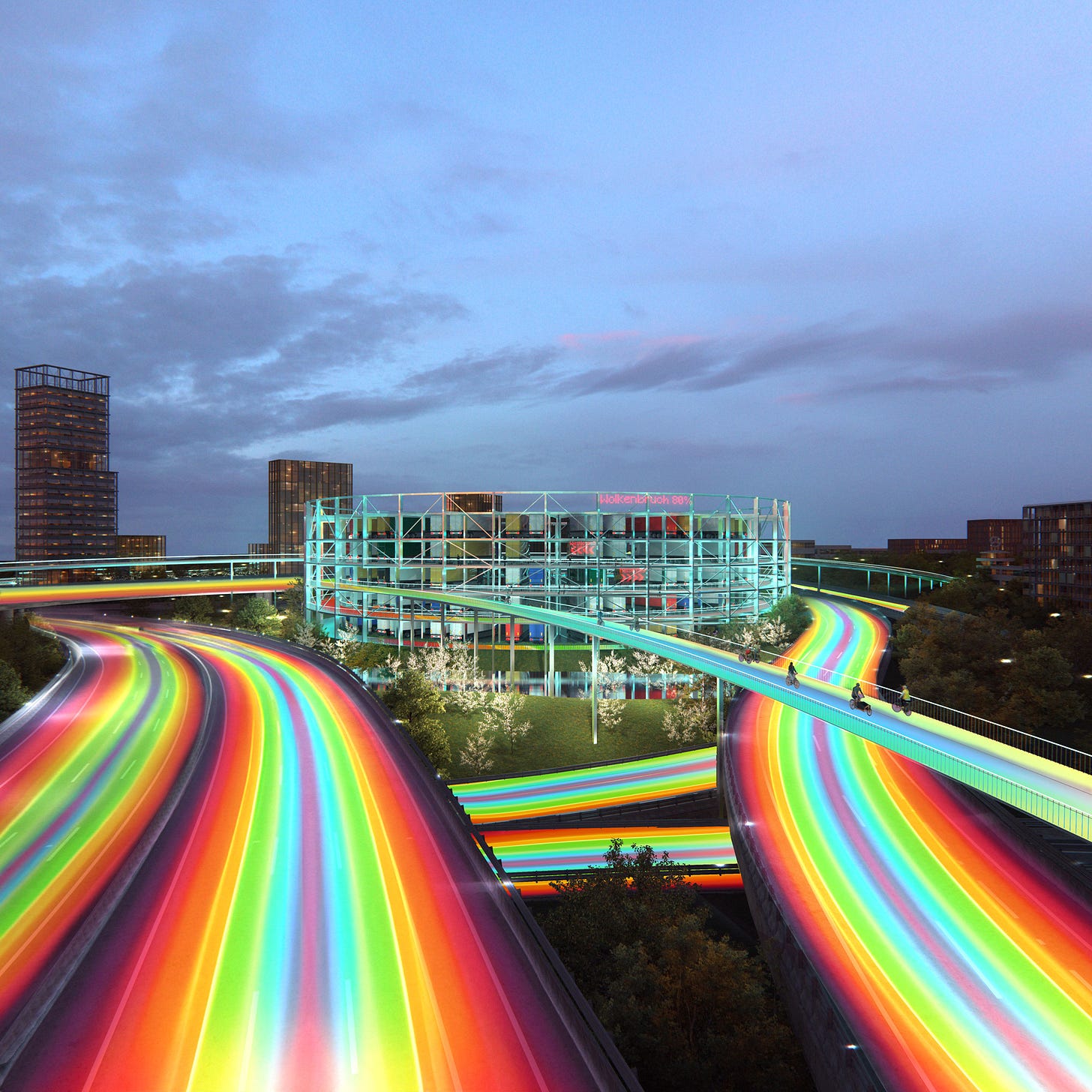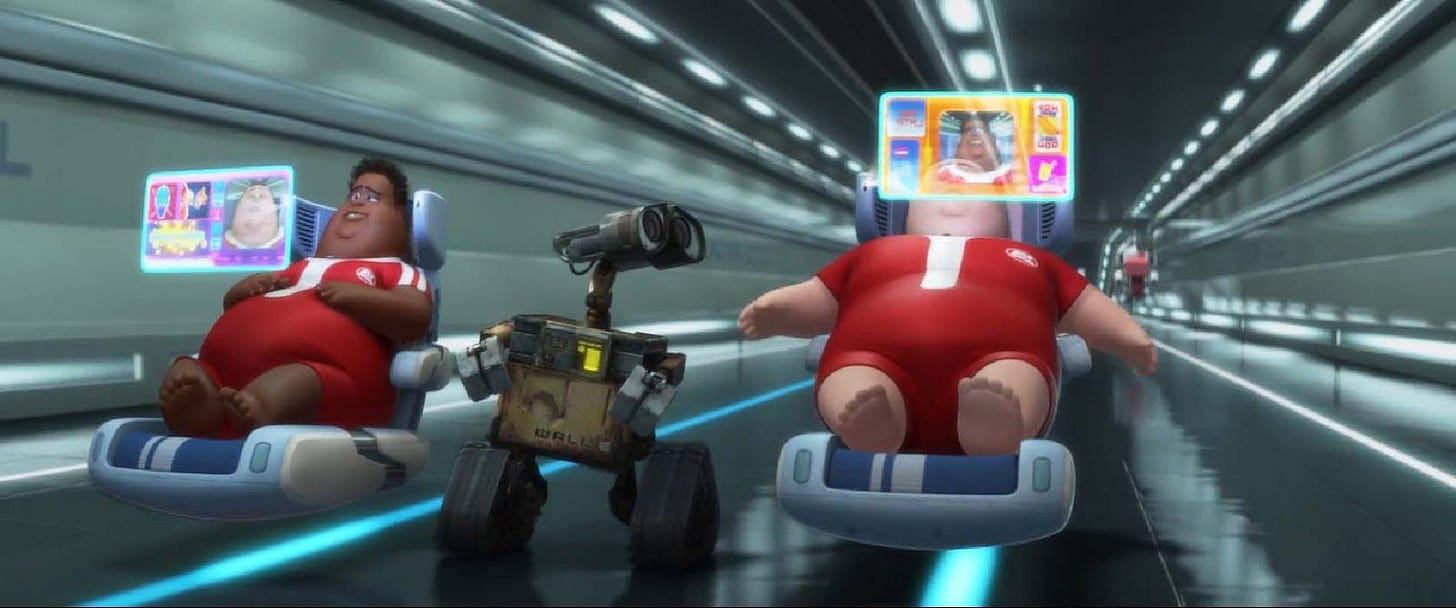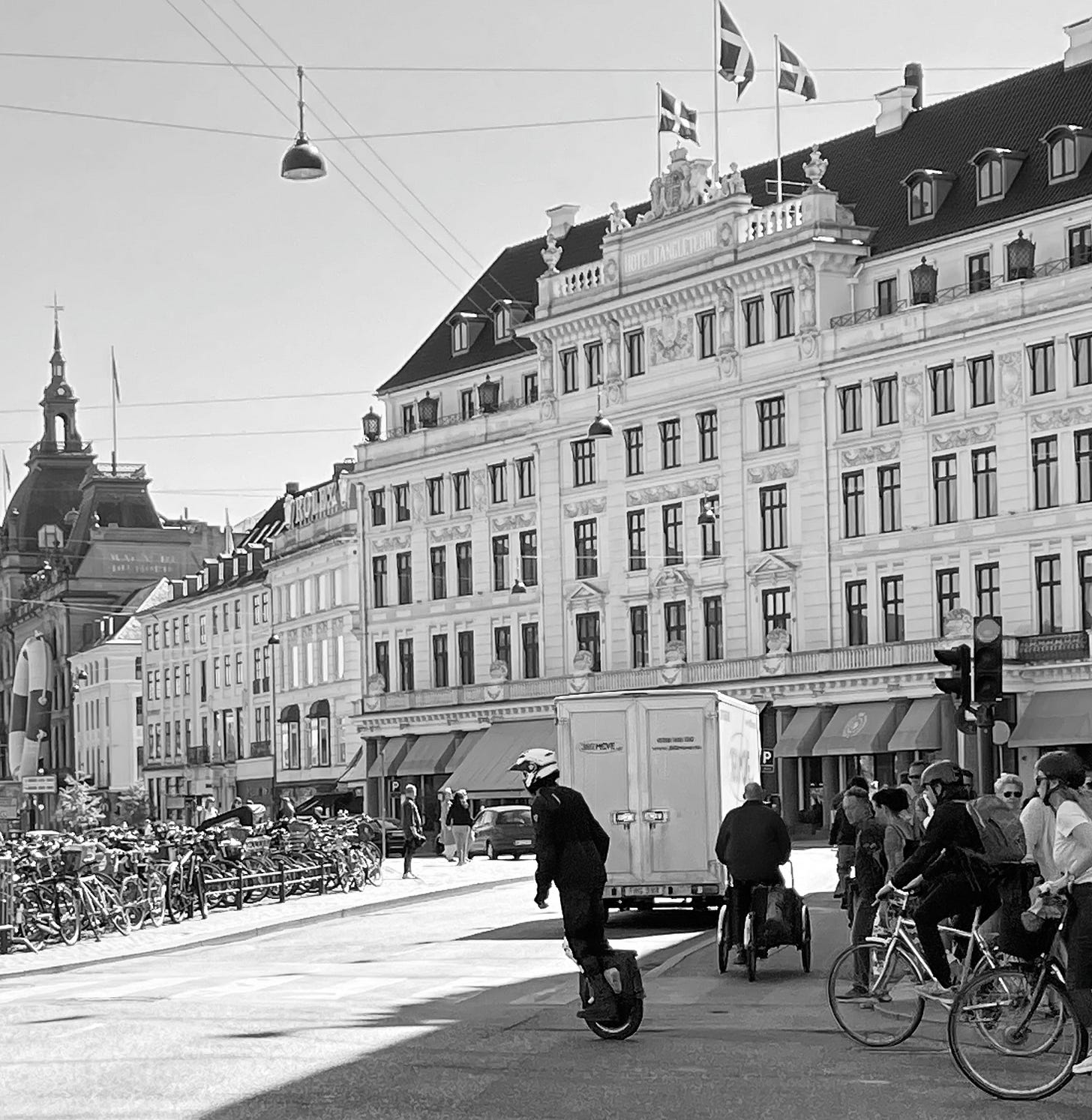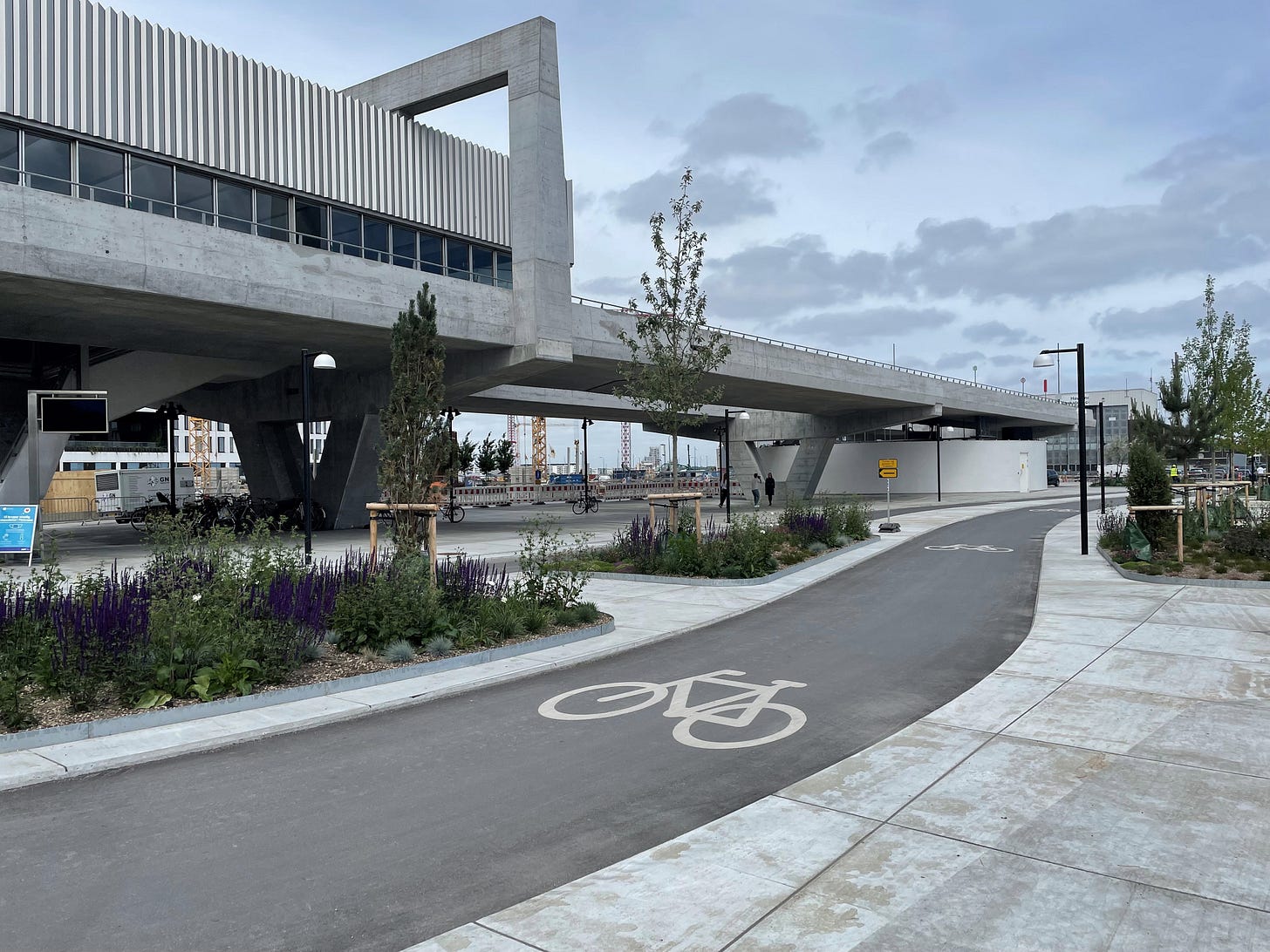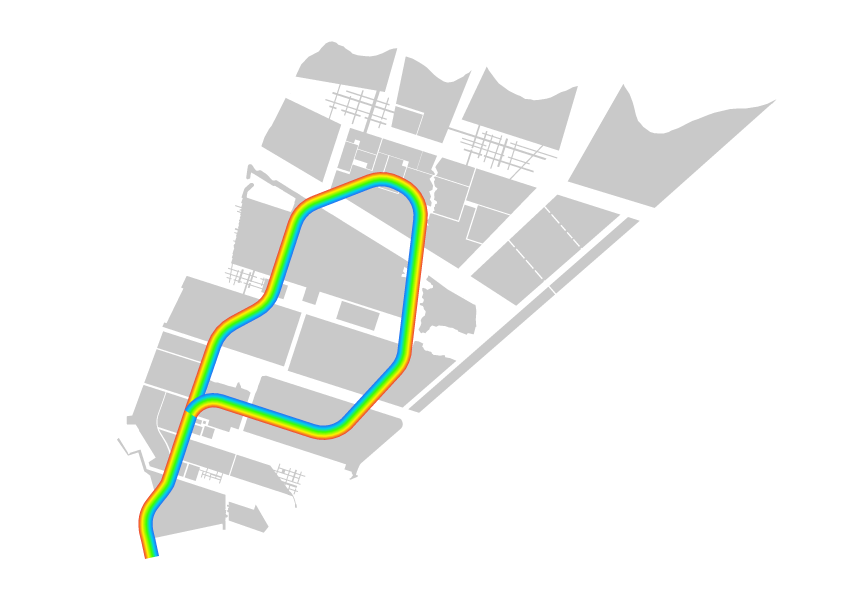Rainbow Roads
Making space for Batteryman
Cycling through Copenhagen, I am constantly being surprised and confronted by new modes of e-mobility. Scooters, skateboards, one wheelers, e-bikes, shaped and sized from the latest fashion, but more importantly designed for new speeds.
The charm of being a Copenhagen cyclist and the conformity of our bike paths is slowly turning into a futuristic mobility show, instead of a safe network for our kids to bike to school. If we want a healthy city, with all the benefits of our large scale investments in bike culture, we need to start thinking about how to make space for Batteryman.
100 years of urban mobility
Our urban space is an impeccable resource for urbanism to thrive and evolve. Urban mobility forms have constantly challenged the way we structure and build our societies around a core of street spaces. Back in early 1900 the first cars emerged in the streets of Detroit, kickstarting the evolution of motorized individual transportation. At first unregulated and implemented overnight in streets designed for people, horses, bikes and trams. Car drivers would be a menace to urban life, and create great disorder to the safety in the streets.
Clive Thompson / Smithsonian Magazine
Cars quickly evolved to be the first priority of ground transportation, and with the efficiency of mass production so widely spread that it became the base for reorganizing cities all over the world, claiming vast amounts of space.
With modernity thriving now for around a 100 years, cars are by far the biggest space consumer in our modern cities, and the main obstacle in obtaining better, greener and healthier urban environments. Soon enough, autonomous cars will be running in our streets, hopefully respecting and dodging urban life by default, but the cars won’t disappear, and still obtain enormous space and resources.
Batteryman is coming
A growing fleet of electric mobility gadgets, like scooters, skateboards, Ninebots, S-Pod’s etc etc, is bringing our urban life one step closer to Michael J. Fox in “Back to the future” or the total despair of humans standing on their own feet in “Wall-E”!
Batteryman, points towards the ultimate culture of convenience - the decay of human efforts in moving and energizing themselves. How will this affect our street culture and health aspects of our future green cities? People moving around the city, powered by electricity, vehicles at different speeds mixing up, fully automated, semi-automated or non-automated. How will our Copenhagen street section cope with this?
These new gadgets are moving in various legal and un-legal speeds, disrupting conformity of space and the common awareness of speed on our bike lanes with crazy acceleration and new behavior.
The streets are our common space. Its the urban artery of a healthy, fit and strong urbanism! More intelligent e-cars will improve safety and air quality, but what about the continuous evolution on micro mobility? It’s still part of an unregulated urban culture like the first cars in Detroit. How do we make room for this and what should the non-fictional future look like? Do we desire a new street section with a dedicated e-lane, or how do we make space for Batteryman, in our already congested cityscapes.
A rainbow of mobility
Looking at urban history, designing for mobility is full of uncertainties and disruptions from new technologies and tendencies. As urban planners we are constantly confronted with the car dominated urbanism, but inner city areas and new urban districts are radically changing towards less cars and more micro mobility. Maybe its time to think about a hierarchy of what we often refer to as ‘soft mobility’, where the e-gadgets get their own lane, and we start reprioritizing active mobility, biking and walking. With less cars and smaller e-busses - the space could be there.
Another future solution could be a common e-space for all smart mobility (e-cars, scooters, driverless buses etc) sharing one space. Maybe with a much more reduced pace - again primarily for inner city areas.
All cities are confronted with these challenges, but often limited to a rather static thinking of mobility speeds for cars vs. bikes vs. pedestrians. The result today is e-gadgets driving all over the place. For Copenhagen mainly packed into the bike lanes and notorious for disturbing speeds and causing accidents.
'Danish and Norwegian studies document that the risk per kilometer traveled is approximately seven to ten times greater on an electric scooter compared to bicycles'
Bjørn Olsson, Danish Traffic Counsel
From green loop to rainbow lanes
Various street concepts are being tested in Copenhagen to prioritize bikes in the streetscapes. We are currently involved in a new green connection through Amager, From the commons to the beach, where various street sections combined, prioritize safe connectivity for school kids and citizens in general.
We also see the realization of the Nordhavn loop, where the second phase is soon to open. A milestone in the development looking back at the vision from 2008, with the loop as core concept of the mobility plan. Together with the metro opening, this showcases the signature of the mobility concept - combining the famous bike culture of Copenhagen, high quality public transport, and a linear green structure connecting the entire plan.
E-mobility is growing in heavy pace, it keeps troubling citizens with its new urban culture and governments with the mess and accidents. Some would say it generally challenges the healthy lifestyle of planning for bike culture.
Could the green loop at Nordhavnen be a showcase for integrating e-mobility? Making space for a prioritized e-lane? And showing the flexibility of long term space planning. Could we invent the future of the street section, where life on batteries copes better with life in general? Proposing an end to the road as we know it and replace it with something entirely new. A resilient urban space as a “rainbow road” for different shades of green mobility.
Copenhagen and many other cities are investing heavily in bold and ambitious bike projects, from new streets to bridges and spaces improving safe connectivity for bikes and pedestrians, but there is a general lack of consideration for the e-vehicles. Batteryman is still unleashed!


